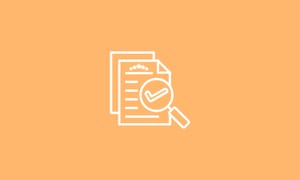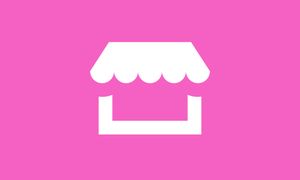Is there anything more frustrating than spending hours crafting what you know to be great content, only for it not to convert?
You’ve put together a solid strategy, done your research, and still…crickets.
Is it too pushy?
Is it not pushy enough?
Is it too long?
Is it that my product just isn’t good enough?
There could be any number of reasons why your content isn’t converting and sometimes it’s hard to pinpoint why.
Rest assured that it’s rarely the fact your product isn’t good enough, you might just not be giving it the credit it deserves.
Here are 4 possible reasons why your content isn’t converting, and how you can change it
You’re Not Benefits Focused
It’s great to talk about your product or service and to be enthusiastic about everything that it can do.
You’re excited about it and you know that it’s exactly what people need.
There’s nothing wrong with that.
You need that passion to convince people to buy.
The problem comes when you don’t tell people enough about the benefits to them of buying it.
In fact, your whole content needs to be benefits-driven or it simply won’t convert.
You only have a small amount of time to convince an audience to buy from you before they lose interest.
This is why it is so important that everything you say is about them and their needs.
What is the problem they are having and how does your product resolve that problem?
It can be tempting to simply list your product’s features and think that’s enough to explain its benefits. In fact, the two often get confused.
Instead of simply listing what your product does, talk about how your audience’s life will be better because of what it does.
Think of this as an example. You’re selling washing powder in a new, bigger 3 litre box. Instead of simply saying “3 litre box” you could say “now with 100 washes instead of 75”.
This clearly shows a potential customer the benefit they get out of buying from you.
Your Offer Isn’t Clear
If it’s not clear to your audience what the product or service is that you’re offering, this will simply cause confusion and they won’t buy from you.
This is largely because they don’t trust you and your products.
Building a relationship of trust is hard when your audience doesn’t know exactly what it is you are selling to them,
It’s easier to work on this relationship when you only have one service or product for sale.
You only have one message and one target audience to sell to.
It gets more complicated when you’re selling multiple things at once.
This can make your website feel messy, overcrowded, and hard to understand. Ultimately, it can mean that good content goes unread and therefore, doesn’t convert.
When you have a number of offers, make sure that they are all kept separate and ideally across different pages of your website.
This is especially important if you are targeting different audiences with each offer.
Don’t duplicate the copy across each page thinking it’ll work. Each of your offers should be written with your target customer in mind.
Just remember to keep everything as clear and easy to understand as possible, leaving no room for ambiguity.
Your CTA Is Not Good Enough
We know that you know what a CTA is and that it is the key to conversion.
You know that your Call To Action needs to be strong, engaging, and almost irresistible to a potential customer.
If you want someone reading your content to do something at the end of reading it, you need to tell them exactly what it is they need to do.
If your content isn’t converting, your CTA might not be enticing enough.
To improve your CTA, think about the following:
- Does your CTA make the reader want to learn more about your product? If not, how could you improve this? What would make you want to click through?
- Is the placement right? Does it flow in the text or does it feel out of place? Awkward CTAs can cause your audience to stop reading if they feel forced into something.
- Could you use the CTA more throughout your content? There’s no need to over do it but if you could place it somewhere else it feels natural, why not?
- Vary the CTA throughout the text. You can use different CTAs; it doesn’t need to be the same one throughout. This also helps to “mix things up” for the reader.
- Consider hiring a copywriter to design it for you. While this may have some initial outlay, copywriters are specialists and know how to write content that converts. It could ultimately be your best investment.
- Be clear about what you want your audience to do. Keep your CTAs clear, obvious, and inviting to the reader.
Your Website Might Be The Problem
Something as simple as a slow to load website can be the difference between content converting, and not.
In fact, every one-second delay in loading can result in a 7% reduction in conversions and 40% of people will abandon a website if it takes more than 3 seconds to load.
You could therefore have the best content in the world, but if users are exiting your website without viewing it because their experience is poor, it’s arguably worse than useless.
Having a well-optimised website experience can be the difference between someone buying from you and not.
So how can you optimise your website?
- Make sure it’s mobile-friendly. Most people access websites via their mobile phone so it needs to be optimised for mobile use.
- Utilising SEO throughout your website will help your audience to find you organically through a Google search and will help you move up through the search rankings (bringing you more traffic!)
- Run a page-speed test and follow the guidance on how to speed up your site if it’s too slow
Conclusion
If you’re struggling to get your content to convert, it needn’t cost you a fortune in ads to solve the problem.
There are so many easy changes you can make that help improve a customer’s experience.
The customer enjoying and finding value in your content is ultimately the key to conversions.
Making everything customer-focused and as easy for them to absorb as possible will eradicate any confusion or ambiguity that turns a potential customer off.
In everything you do, tell the customer how they need your product or service in their life, and you’ll see more conversions.






